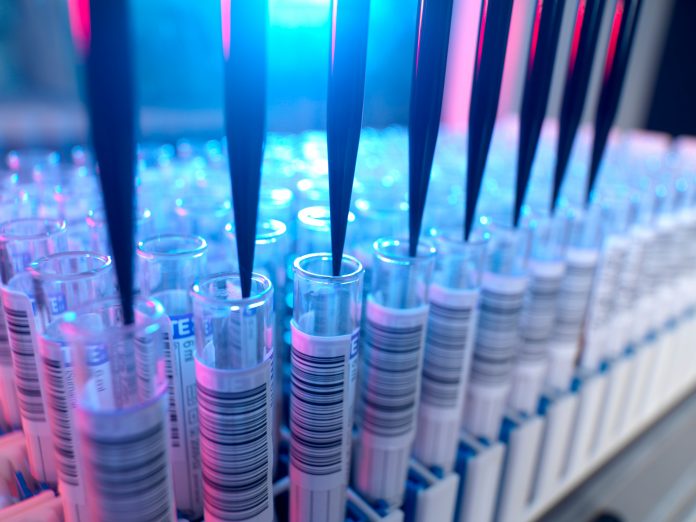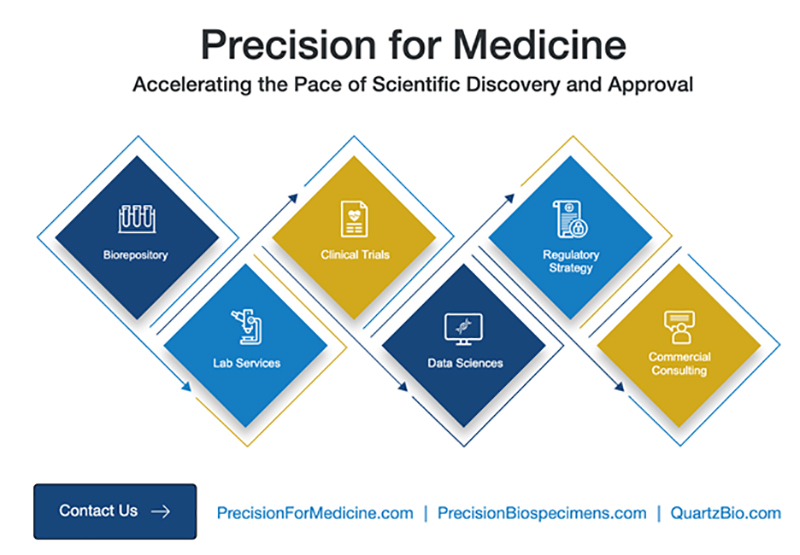
Sponsored content brought to you by
The trend toward personalized and precision medicine is driving demand for diagnostics which, in turn, has led to closer regulatory scrutiny and stricter requirements for placing products on the market. We pulled together some insights from the Diagnostics Solutions team at Precision for Medicine, a global CRO supporting diagnostic and drug developers with their biomarker programs, who is working to help its clients meet the new requirements, going into effect globally.
The most notable change, the In Vitro Diagnostic Regulation (IVDR) adopted by the European Union—which will be in full force as of May 26, 2022—seeks to enhance transparency, quality, and safety in the manufacture of in vitro diagnostic medical devices, including companion diagnostics (CDx). For manufacturers of in vitro diagnostics (IVDs), the countdown to compliance begins with an understanding of these new requirements and a strategy for meeting the more stringent requirements of this impending regulation.
Background on IVDR
Designed to set the regulatory gold standard, IVDR requires, among other things, stricter clinical evidence, traceability using a unique device identifier (UDI), and new post-market surveillance and vigilance requirements. The IVDR also calls for establishment of the European Databank on Medical Devices (EUDAMED), a comprehensive database containing information on the lifecycle of all products marketed in the EU, including six interconnected modules:
- Actor registration
- UDI and device registration
- Notified bodies (NBs) and certificates
- Clinical investigations and performance studies
- Vigilance and post-market surveillance
- Market surveillance
Impact of IVD Reclassification
Under the In Vitro Diagnostic Directive (IVDD) published in 1988, the two methods for market entry were self-certification and notified body (NB) approval. Approximately 80 percent of IVDs were eligible for self-certification and NB approval was reserved for blood banking products, self-testing devices, and IVDs for certain infectious diseases.
The transition to IVDR is paradigm-shifting for manufacturers as the regulation outlines a four-class, risk-based system where risk is based on the probability and severity of harm.1 IVDR established four risk classes, where D is the highest risk and A is the lowest. IVDs classified under List A and B of IVDD now fall into Class D. If an IVD has multiple uses, all uses must be classified and the highest risk class is applied. All products other than Class A products require pre-market review by an NB. In addition, Class A devices that include sterile aspects must have those aspects assessed by an NB.
Table 1. Risk Classes Under IVDR2
| Class | Description |
| D | Covers general life-threatening conditions and, more specifically, transmissible agents in blood or other biological materials intended to be transplanted or re-administered into the body |
| C | Covers a diverse mix of high-risk IVDs that present a lesser risk to the wider population. This class also covers most self-testing IVDs and testing for infectious diseases and cancer, companion diagnostics, and genetic screening. |
| B | Covers all IVDs not covered specifically in other classification rules as a default class. This class also covers self-testing IVDs for pregnancy and fertility testing, detection of cholesterol levels, and detection of glucose, erythrocytes, leukocytes, and bacteria in urine. |
| A | Covers laboratory devices, instruments, and specimen receptacles |
IVD reclassification also impacts quality system requirements. With the exception of Class A, all products require, at a minimum, a full quality management system, audit with an NB, and review of at least one technical file per generic device group. Class D devices also require batch verification and reference laboratory involvement.2
Requirements for Clinical Evidence
While a CE mark under IVDD may have only required analytical data, the IVDR specifies and defines the clinical evidence requirements that is proportionate to the risk class of the device. For products that are currently on the market, post-marketing surveillance data can be used to meet the requirements. For new products, manufacturers may find it useful to use FDA requirements as a starting point for defining the data needed to demonstrate sufficient clinical performance and the design of an appropriate clinical trial.
To comply with IVDR, manufacturers need to include a clinical evidence report containing scientific validity, analytical performance, and clinical performance data in their technical documentation. This report is meant to be a living document that is reviewed periodically throughout the product’s lifecycle and updated as appropriate.
It is worth noting that the EUDAMED module for clinical investigations and performance studies is not yet available. Until the module is available, the provisions listed in Annex VIII of the IVDD apply to information exchange on performance evaluation studies. Consequently, performance evaluation studies are still subject to specific national requirements for notification and application, which vary among member states, adding further complexity for manufacturers seeking to conduct their diagnostic clinical studies in multiple countries.
Given that IVDs are becoming more diverse and complex, there is no one-size-fits-all approach to defining or generating the clinical evidence needed to support IVDR compliance. The International Medical Device Regulators Forum has issued guidance to help manufacturers determine how clinical evidence is defined and how it should be studied.3
Other Notable IVDR Requirements
Supply Chain Control
The scope of the IVDR extends to supply chain control and increases the compliance verification and vigilance responsibilities of each actor in the supply chain downstream from the manufacturer. The IVDR also includes new requirements for traceability, where all economic operators must be able to identify who has supplied them with a device and to whom they have supplied a device. These records must be retained for at least five years after the last device was placed on the market.2
Intended Purpose and Labelling
The IVDR is more prescriptive than IVDD regarding the information required for describing a product’s intended purpose. In addition to product use, the intended purpose must include details on how the product functions and what is to be detected, whether it is a biomarker, condition, or risk factor.
The IVDR outlines new requirements for product labelling, including the addition of the importer’s name to the label, availability of the label on the manufacturer’s website, and detailed instructions or precautions for safe disposal.4
Responsible Person
The new regulation also requires manufacturers to designate a person responsible for regulatory compliance. This person must meet certain qualifications and should generally be an employee of the IVD manufacturer.
Post-Marketing Surveillance and Vigilance Programs
Under the IVDR, post-market surveillance and vigilance procedures need to include a continuous evaluation and improvement loop, the purpose of which is to help manufacturers perform continuous risk management, update the public summary of safety and performance, if applicable, and keep the clinical evidence report up to date.
The IVDR also shortens the timeframe for reporting serious adverse events to 15 days. The regulation also specifies new processes designed to ensure that relevant data on product quality and performance safety are reviewed throughout the lifetime of each device.
Conclusion
The IVDR aligns EU regulations more closely with FDA regulations, which will ultimately enable greater data sharing across submissions and enhance opportunities to seek marketing approval in multiple geographies in parallel. While having a more harmonized regulatory framework simplifies administrative procedures and streamlines access to the global market, meeting IVDR compliance requirements may be challenging, particularly for first-time manufacturers or those who have a broad IVD portfolio. Understanding the spectrum of changes required and implementing new processes to meet those requirements will enable manufacturers to place safe and effective products on the market more quickly while ensuring ongoing quality and transparency.
To get support for your biomarker or diagnostic program, visit the Precision for Medicine CRO website or their Biospecimen Solutions website.

References
1. Medical Device Coordination Group Document. Guidance on Classification Rules for in vitro Diagnostic Medical Devices under Regulation (EU) 2017/746, November 2020.
2. Official Journal of the European Union. Regulation (EU) 2017/745 of the European Parliament and of the Council of 5 April 2017 on medical devices, amending Directive 2001/83/EC, Regulation (EC) No 178/2002 and Regulation (EC) No 1223/2009 and repealing Council Directive 90/385/EEC and 93/42/EEC. Published 5 May 2017.
3. International Medical Device Regulators Form. Documents. Last updated 2 March 2021.
4. Thema. MDR and IVDR essential requirements for instructions for use and labeling. Last updated 6 September 2018.














